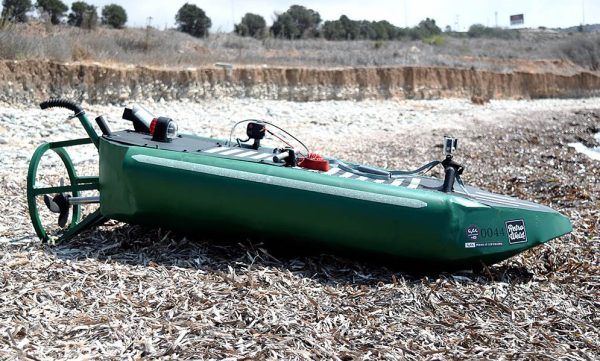It’s the water-borne equivalent of building a minibike out of steel pipe and an old lawnmower engine. Except it’s a DIY personal watercraft made out of aluminum and an old chainsaw, and it has that same garage build feel – and the same disappointing results.
When we first saw the video below, we were hoping for one of those boats that let you water ski by yourself, or a wave-hopping, rooster tailing DIY jet ski. Alas, the chainsaw [MakeItExtreme] chose to power this boat is woefully underpowered, and the boat barely has enough oomph to make a wake. [MakeItExtreme] acknowledges the underwhelming results and mentions plans to fix the boat with a more powerful engine and a water jet drive rather than the trolling motor propeller they used. Still, whatever improvements they make will probably leverage the work they put into the hull, which is a pretty impressive display of metalwork. We’re used to seeing [MakeItExtreme] work in steel, so it was interesting to watch aluminum panels being cut, bent, and welded into a watertight hull. Looks like there’s plenty of room in there for more power, and we’re looking forward to version 2.0 of this build.
If you like rough and ready metalworking videos, there are plenty of them on [MakeItExtreme]’s YouTube channel. We’ve covered quite a few before, including this all-terrain hoverboard and a spot welder that’s more-or-less safe to use.
Continue reading “Garage-built Aluminum Miniboat Tears Up The Surf. Or Not.”




 The firing assembly in the jet comes from a Nerf Rival Zeus Blaster, which is itself an interesting device. It uses two electric flywheels to launch soft foam balls – much like a pitching machine. With one flywheel running a little faster than the other, the trajectory can be modified. For example, a slight topspin gives the balls a longer and more stable flight path. Of course, foam balls slow down quickly once launched and at high speeds the aircraft can overtake the same projectiles it just fired, but it’s fun all the same.
The firing assembly in the jet comes from a Nerf Rival Zeus Blaster, which is itself an interesting device. It uses two electric flywheels to launch soft foam balls – much like a pitching machine. With one flywheel running a little faster than the other, the trajectory can be modified. For example, a slight topspin gives the balls a longer and more stable flight path. Of course, foam balls slow down quickly once launched and at high speeds the aircraft can overtake the same projectiles it just fired, but it’s fun all the same.










